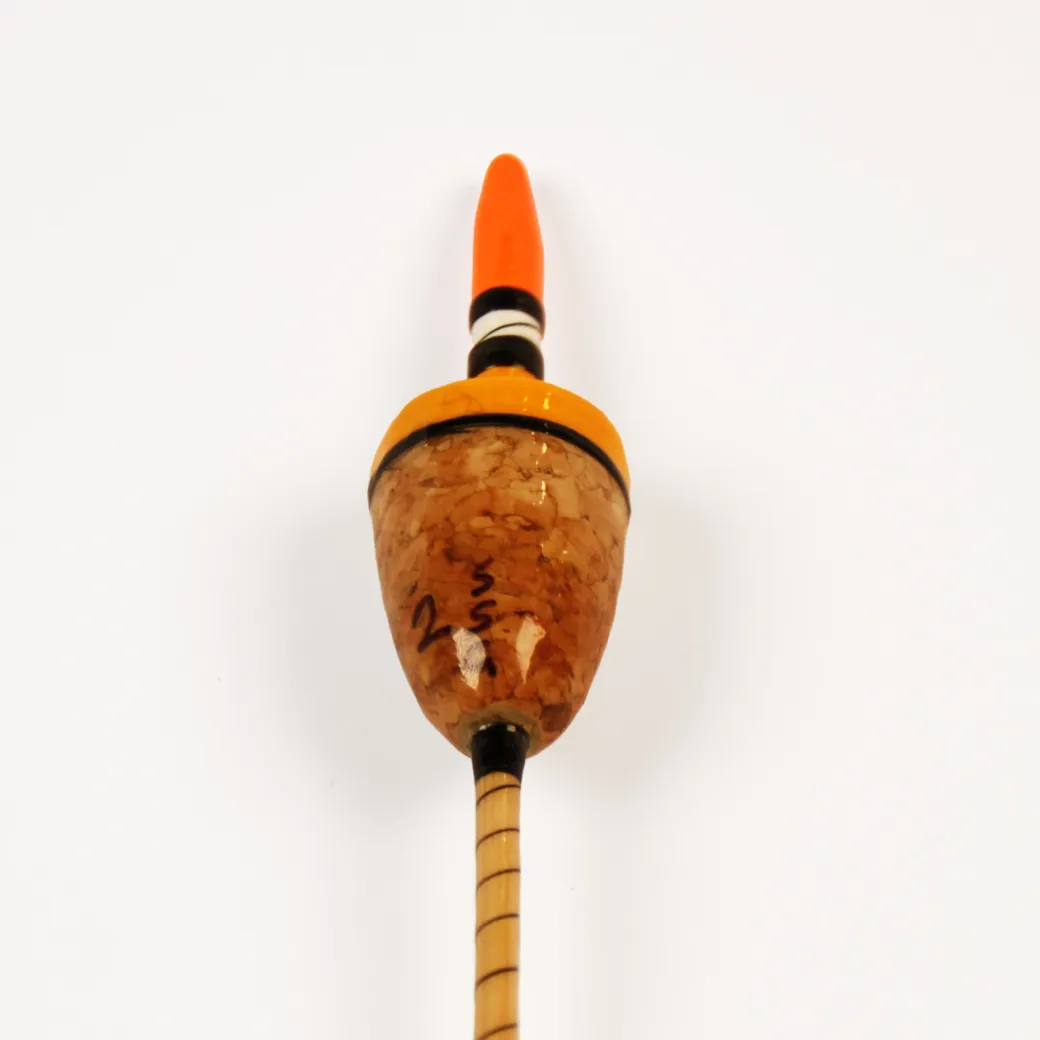- Home
- Materials Library
- Cork Fishing Float
Cork Fishing Float
Material ID: 1333
Description
Cork is the bark of the Quercus suber or ‘cork oak’ tree, a slow-growing, long-lived oak that can survive for up to 250 years. The cork is harvested by hand from the stem of the tree every nine years or so, and removed in such a way as to avoid damaging the rest of the tree.
Cork is a cellular material: composed of a honeycomb structure of tiny pentagonal or hexagonal cells made from a waxy biopolymer called suberin that is impermeable to gases and liquids. These cells are hollow and filled with an air-like gas that makes up 90% of its volume. These air-filled cells contribute to many of the unusual properties of cork, such as its light weight (low density), its impermeability, and its excellent thermal insulation, acoustic insulation, flexibility and compressibility. Despite its impermeable, waxy honeycomb structure, cork is able to ‘breathe’ because it is punctuated by lenticels; porous cells that allow for the controlled exchange of gases between the inside and outside of the plant.
These properties make it the ideal material for fishing floats (because of its buoyancy) and wine and champagne bottle stoppers (because of its impermeability to gases and liquids). In terms of protecting the wine from oxygen, it is thought to be superior to plastic (polyethylene) stoppers, as synthetic materials struggle to fill imperfections in the neck of the bottle and plastics can become brittle with age, allowing air to pass between the closure and the glass. Tin-lined screwcaps are thought to offer the closest thing to an air-tight seal, closely followed by a high-quality natural cork.
However, whilst a hermetic seal may be the ultimate goal for a white wine made from aromatic grapes that is designed to be drunk young, low levels of exposure to oxygen may actually benefit other types of wine, particularly reds made from naturally reductive grape varieties such as Pinot Noir or Syrah. Cork allows for these low levels of permeation because the presence of the lenticels in the structure of the cork means it is not quite a hermetic seal, and a very small amount of gas can diffuse across these porous cells, helping with the maturation of wine.
Library Details
Site
Bloomsbury
Status
In Library
Location
Glass Shelves
Form
Object
Handling guidance
Wash hands after handling.
Date entered collection
Monday 2nd December, 2019







